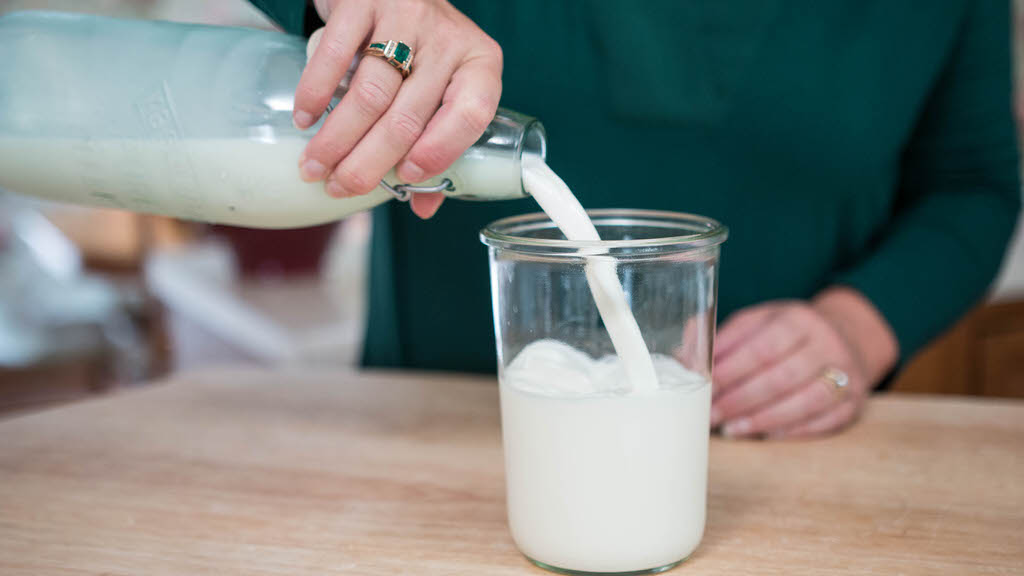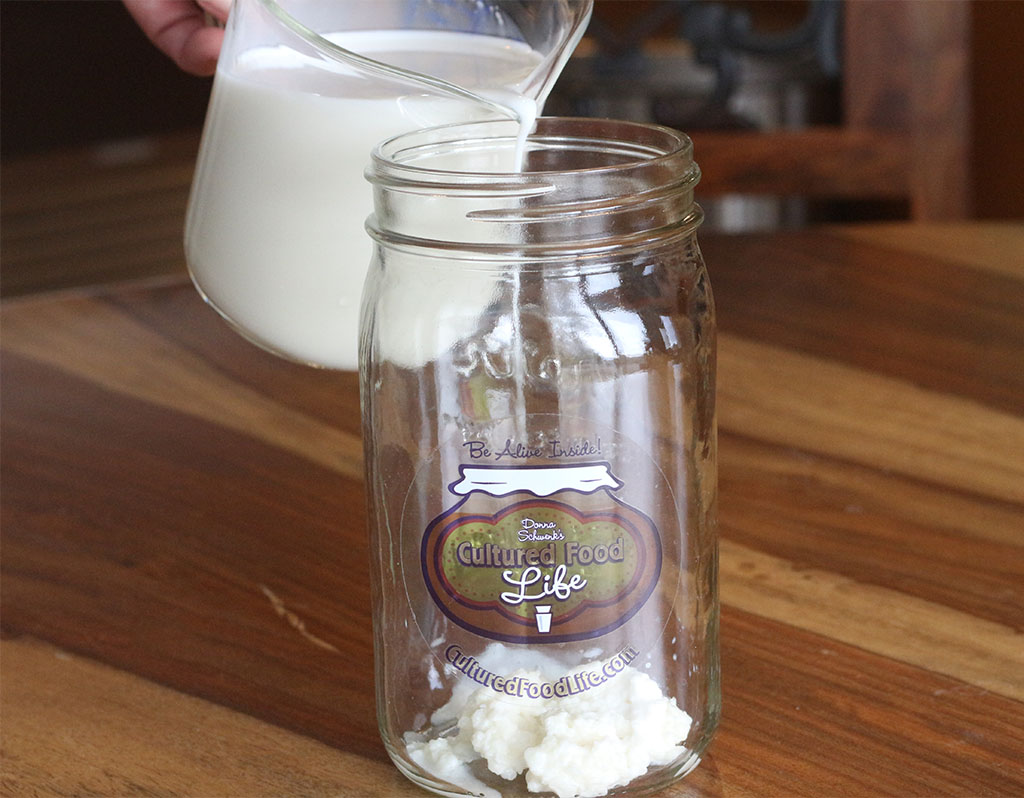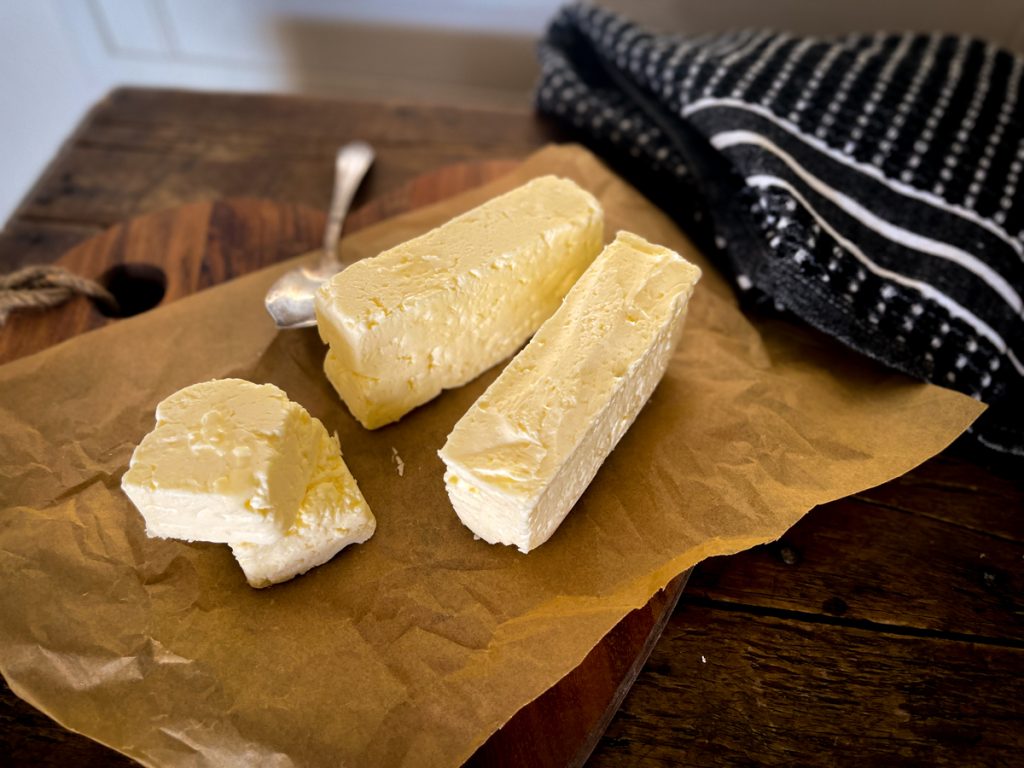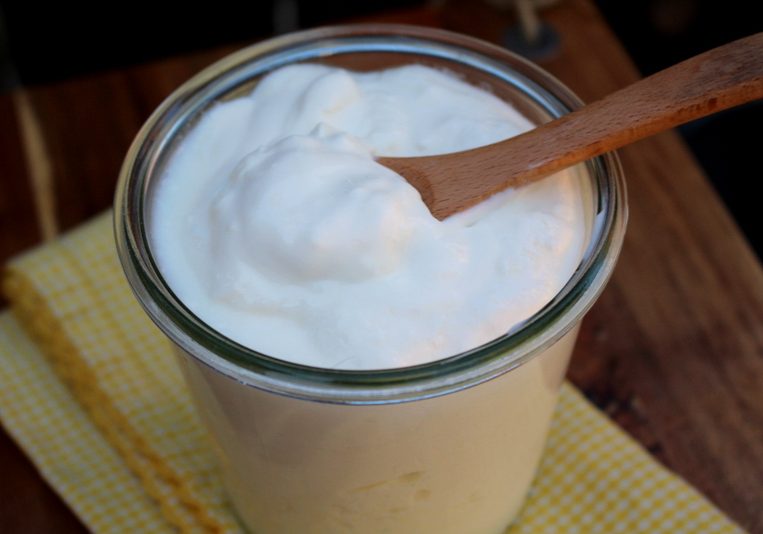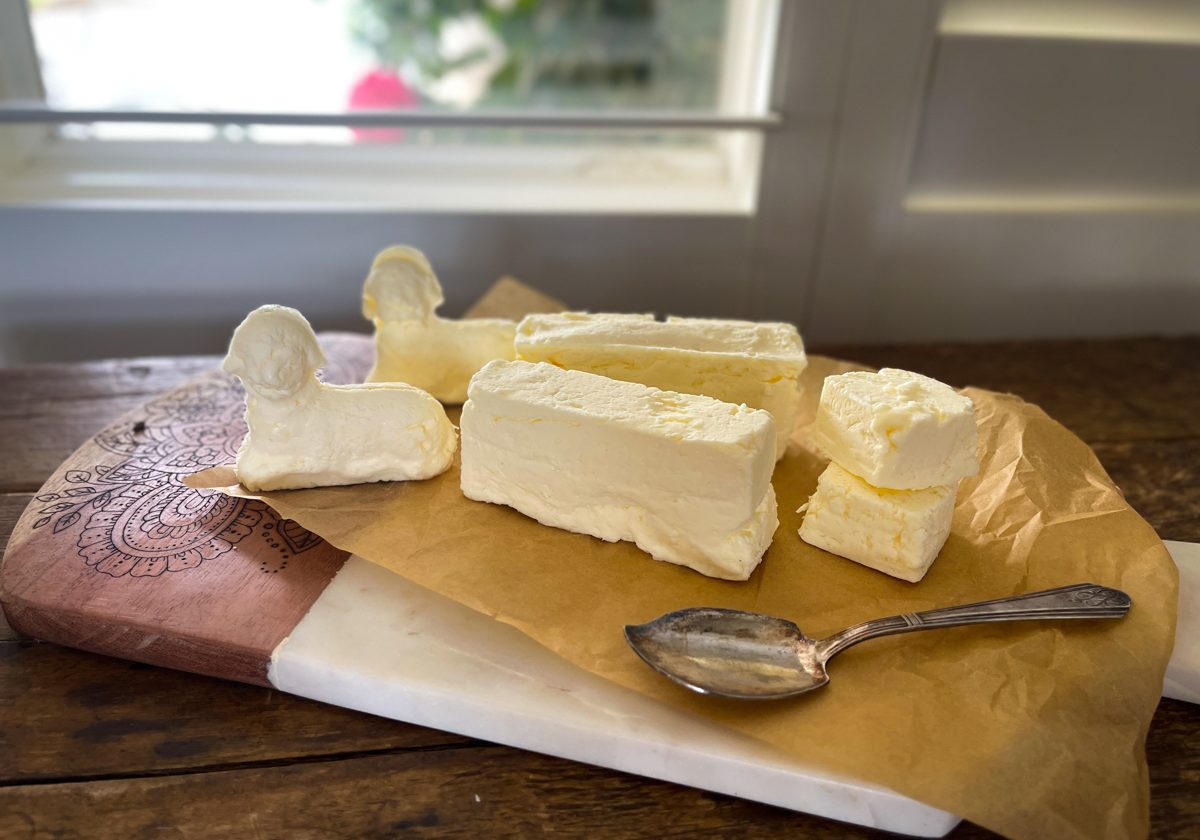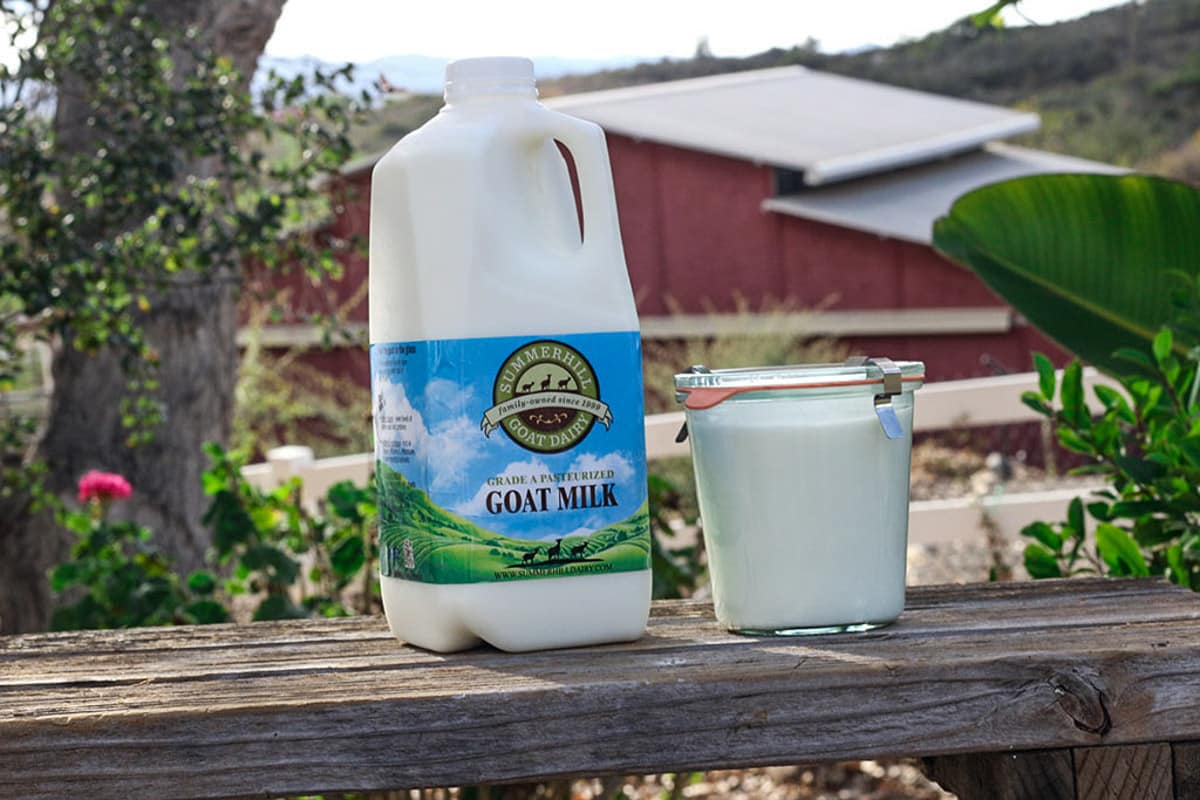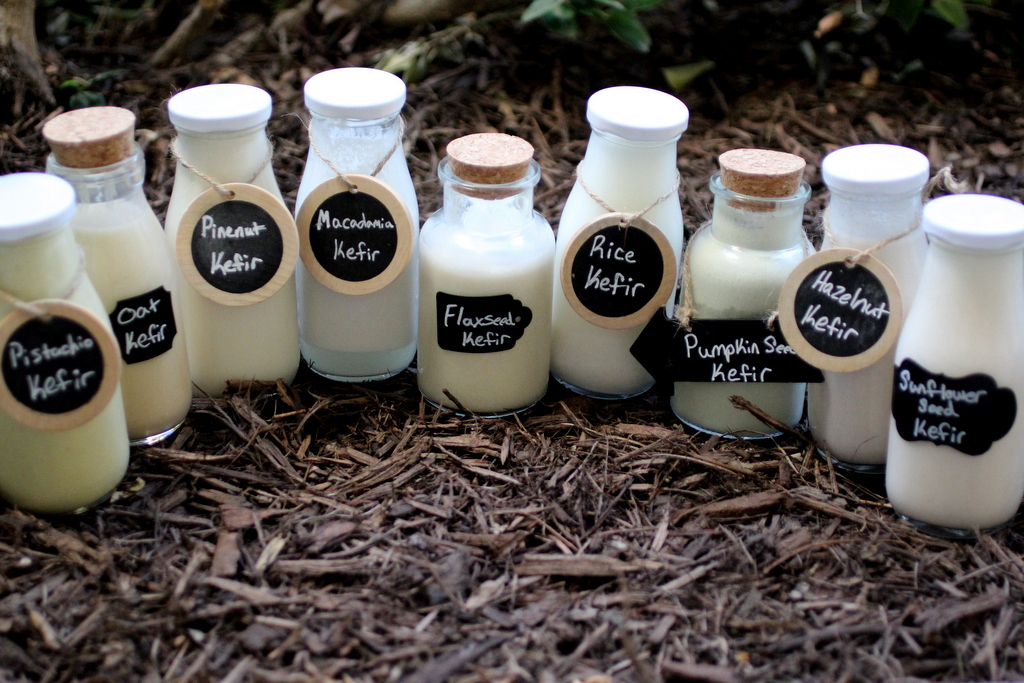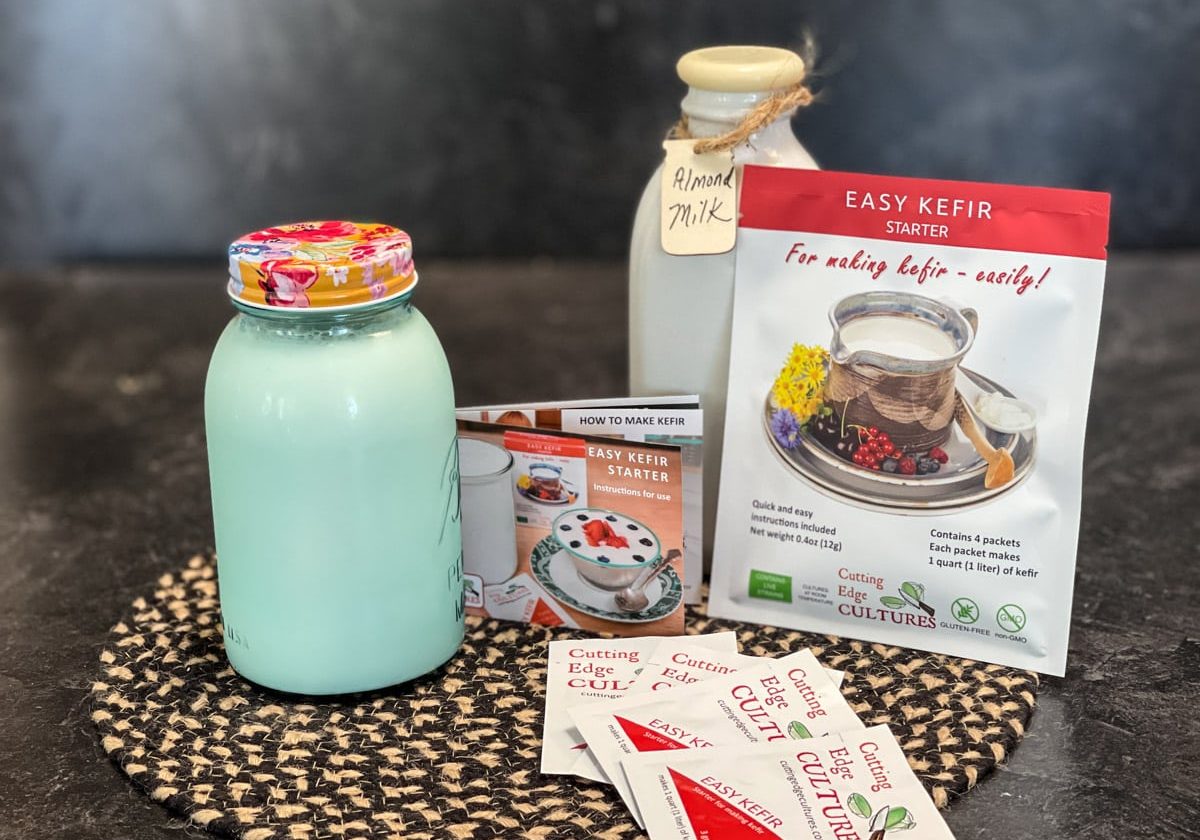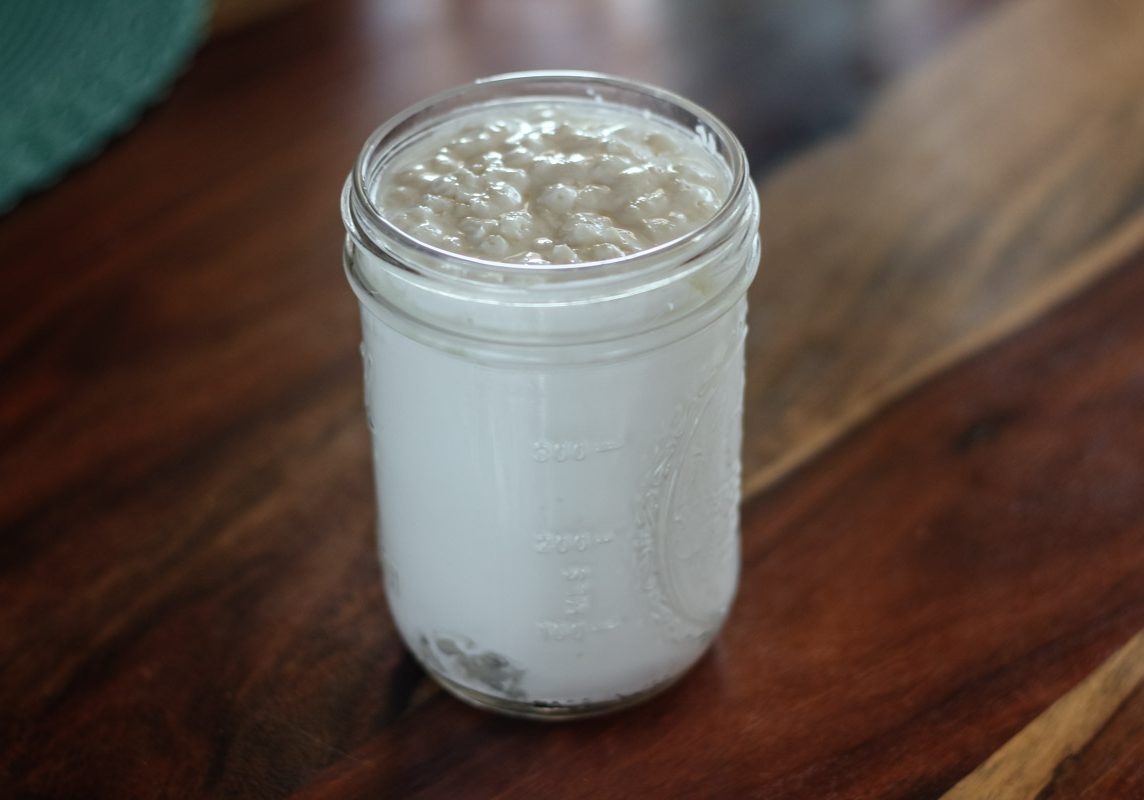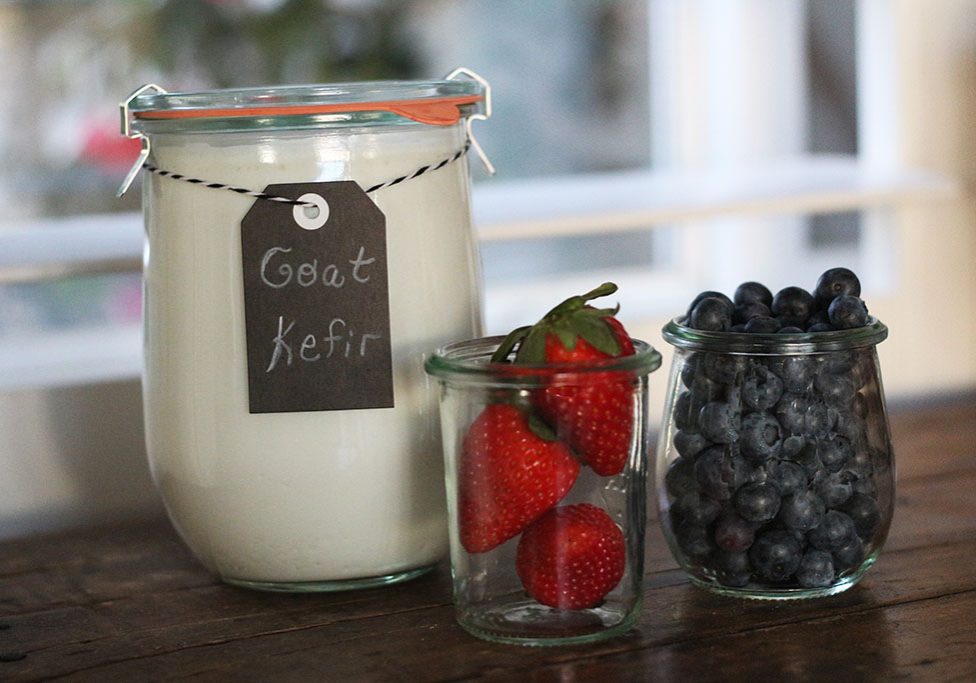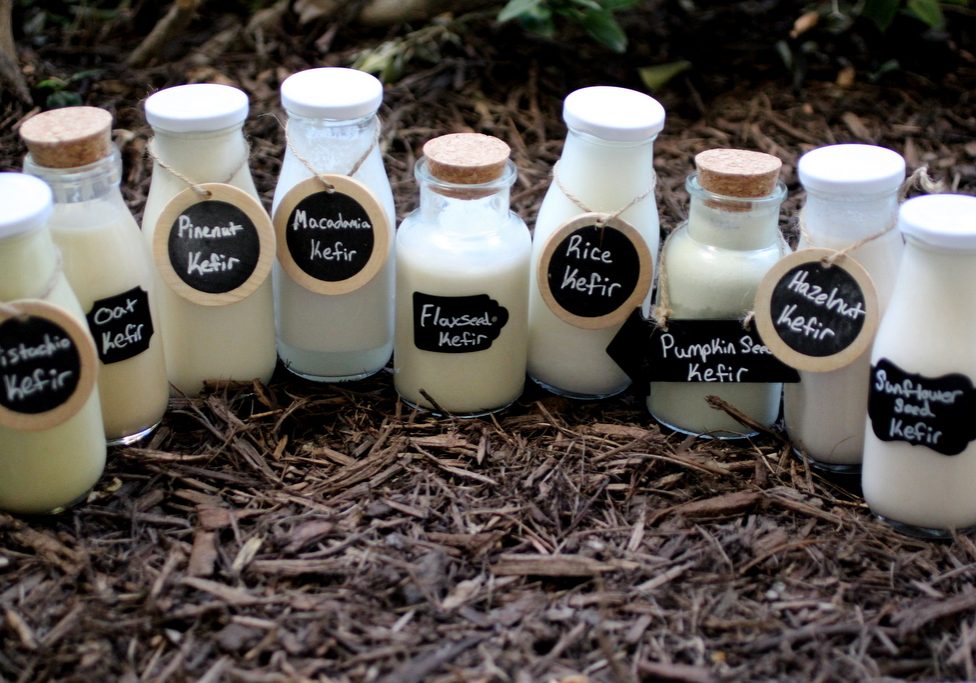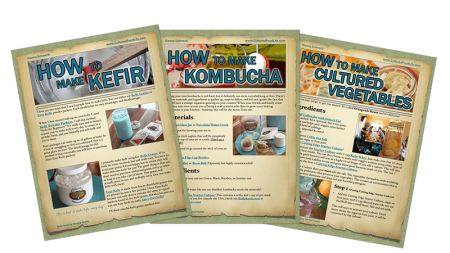
What Kind of Milk Do I Use To Make Kefir?
The Many Ways to Make Milk Kefir
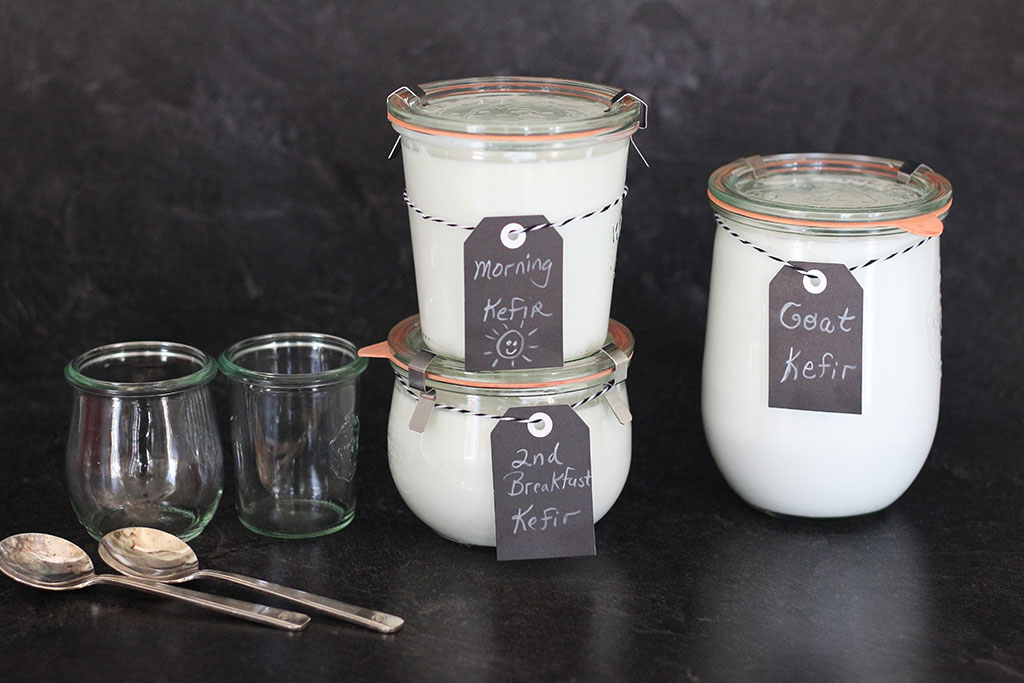
Different Milks For Kefir
There are many ways to make kefir with many different types of milk, and believe me, I've tried them all. Mostly to try to help you. I have some of my favorites, but I will explain which ones you can use and let you know my favorites. There is a lot to understand about milk and the many ways you can consume it and use it to make kefir. Things like, "What do pasteurization and homogenization do to milk? Why don't you recommend organic milk to make kefir? Can I culture cream and make kefir butter and sour cream? What about non-dairy milk to make kefir? Does raw milk make good kefir?" I go into great detail here, but stay with me. You will learn so much.
Kefir, when placed into milk, becomes an entirely different food. In the process of fermentation, added enzymes and vitamins become present in the milk. The milk sugars (lactose) are consumed during the process of making kefir 99.9 % lactose-free and less than 1% sugar. The fermentation process changes the milk in wonderful ways and even has anti-tumor effects. Check out this study that found that kefir extracts contain constituents that specifically inhibit the growth of human breast cancer cells, which might eventually be useful in the prevention or treatment of breast cancer. [1] There is nothing that has been more life-changing for me than drinking kefir every day. The more you understand and learn, the better your kefir will be. It's worth the small effort to understand milk and kefir. It's made all the difference for me.
Check out all our options for types of milk that can make kefir. Scroll down for greater detail:
pasteurized—homogenized: Whole, fat-reduced, & non-fat Milk
 Pasteurized and Homogenized Milk
Pasteurized and Homogenized Milk
Pasteurized and homogenized is the most common type of milk that is used to make kefir. It's the one I use most often, although I love raw milk kefir and goat kefir too. Regular pasteurized milk HTST (high-temperature short time) makes great kefir and is affordable. Let me explain more about how milk is pasteurized and homogenized, and then what happens when you ferment it. This kefir has helped me more than I could have ever imagined and is accessible and easy to make.
Pasteurization
In most milk processing plants, chilled raw milk is heated by passing it between heated stainless steel plates until it reaches 161° F. It's then held at that temperature for at least 15 seconds before it's quickly cooled back to its original temperature of 39° F. With kefir fermentation, you're adding back enzymes, vitamins, and tons of probiotics. It changes the milk by adding many of the things pasteurization takes out. I love raw milk, too, since added enzymes and vitamins are still present, but there are a few things you should know about raw milk and kefir. See below.
Homogenization
Homogenization is a process that gives milk its smooth texture. Milk that has not been homogenized contains a layer of cream that rises to the top of a glass. The homogenization process involves reducing the size of the fat globules (the cream that rises to the top of the glass or bottle) into minuscule portions that are dispersed evenly throughout the milk. This is usually achieved by pumping milk through small openings under very high pressure. You can find pasteurized milk that has not been homogenized (raw milk is naturally not homogenized) but one thing to note. The cream, when it is fermented into kefir, gets a really yeasty taste that I don't like, so I always remove the cream in milk and use it for other things instead of fermenting it.
Whole, fat-reduced, and non-fat milk
When the milk comes out of the cow, it's 3.25% fat—in other words, it's whole milk. Here is the breakdown of fat in milk.
- Whole milk has 3.5 percent butterfat
- 2 percent low-fat milk has 2 percent butterfat
- 1 percent low-fat milk has 1 percent butterfat
- Skim milk has less than 0.5 percent butterfat.
Organic Milk
 Organic Milk
Organic Milk
Most of the time, organic milk that you purchase from the store is ultra-pasteurized, even if it does not say "ultra-pasteurized." The problem is that ultra-pasteurized milk is heated at high temperatures, longer than regular milk, causing many problems when making kefir and problems with digestion. If it's not ultra-pasteurized, then organic milk is fine for making kefir.
UHT (Ultra High Temperature) milk is rapidly heated to 280+ degrees for 2-3 seconds. When you rapidly heat milk, it denatures the proteins differently and makes them significantly harder to digest. Denaturation involves the breaking of many of the weak linkages, or bonds, within a protein molecule that is responsible for the highly ordered structure of the protein in its natural state. UHT processing of milk also kills off the enzymes present in milk needed to digest the casein, and the casein itself is altered to the point of being indigestible. In regular HTST, pasteurization results in less than 10% denaturation. In UHT milk, it results in in100% denaturation. No wonder people have so much trouble digesting milk. Kefir doesn't like it either and often will refuse to culture.
Here is another problem with UHT milk and kefir. Casein is the protein that causes "curds" to form when the milk sours. Since the UHT milk is 100% denatured, your kefir won't get thick and properly ferment.
Interestingly enough, if you struggle with casein, fermentation breaks this down through a natural process and allows the curd to form in kefir. If there is any casein in the whey, it would be very minimal, but most likely none. If you're making kefir cheese by separating the whey from the curds, and you let it ferment longer in the fridge, it too will most likely break down the casein. You want the casein to be present in the milk to form the curd in kefir, but kefir will also break it down so you can digest it. Doesn't get better than that!
If you choose to use organic milk, make sure you know what you are getting and that it’s not ultra-pasteurized.
Raw Milk Kefir
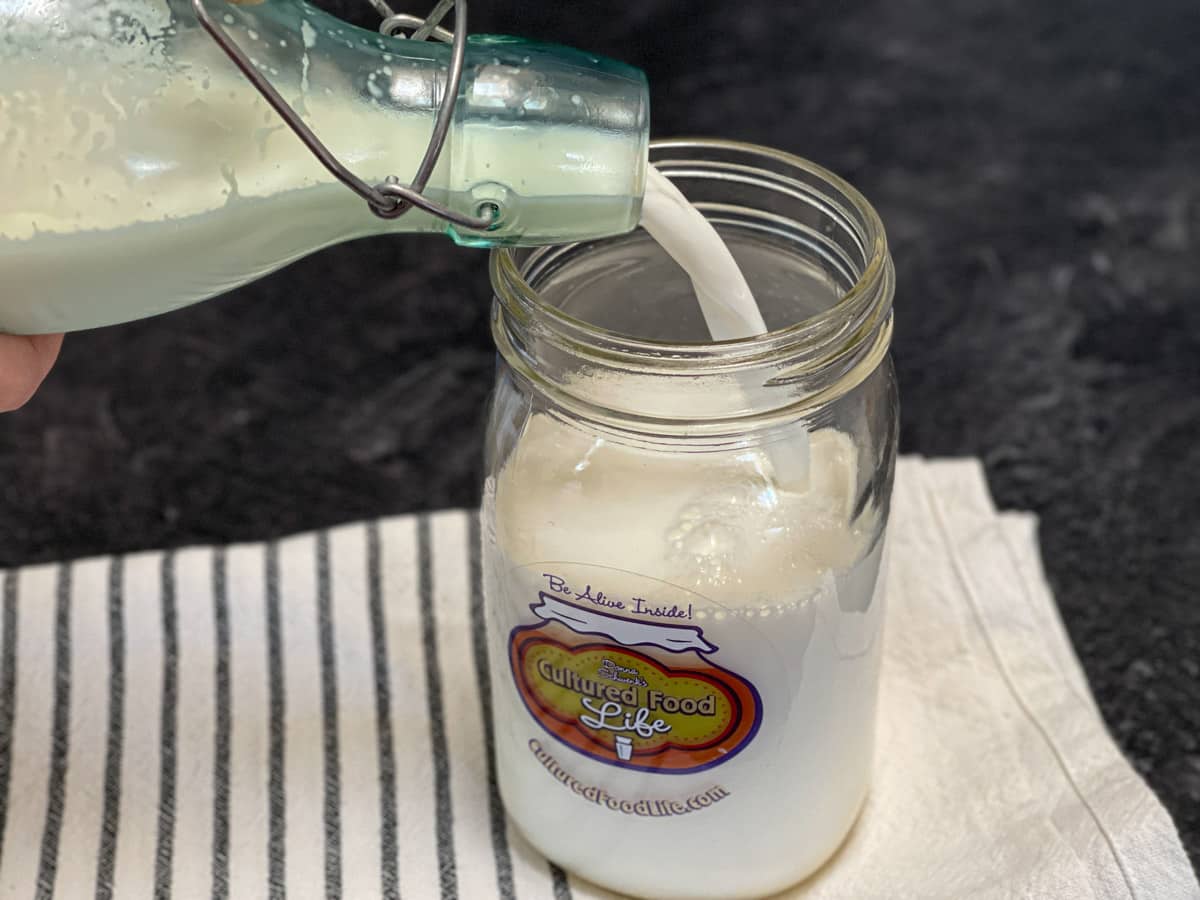 Raw Milk Kefir
Raw Milk Kefir
Raw milk makes wonderful kefir. Raw milk has very fragile proteins. These proteins are complex and multi-dimensional. Raw milk has special enzymes that help you digest the milk. Protease, lipase, lactase, amylase, and lactoperoxidase are all enzymes in raw milk. Each of these special enzymes helps you digest different things. The enzyme protease aids in the digestion of proteins. Lipase enzyme aids in the digestion of fats. Lactase and amylase help you digest the milk sugars (lactose). Lactoperoxidase is also an enzyme in raw milk that is an effective antimicrobial agent and is used as an antibacterial agent in reducing bacterial microflora in raw milk.
Something to know - there are so many naturally-occurring good bacteria in the milk they will often compete with those 50+ bacteria in kefir. Bacteria work in numbers, so the bacteria that is most dominant with the most beneficial strains will win out. It really depends on your source of raw milk. You should always go to a reliable source if you can find one in your area. I do make raw milk kefir since raw milk is available in my area but it's very expensive. Because I make so much kefir, I mostly use pasteurized milk and this way I know I'm getting the 50+ beneficial strains in kefir and I save my raw milk for drinking. Some people have trouble making raw milk kefir since they don't know which strains are present in their milk that compete with kefir. However, if the strains in your kefir grains (or Easy Kefir) are strong then it shouldn't be a problem.
Cream Kefir
Making Kefir with Cream
Fermenting cream is a little tricky. The cream has less lactose and natural sugars than milk so the grains don’t have as much food to consume. The cream and the grains can also taste overly yeasty in both taste and texture if fermented too often. The kefir grains also will become hard to strain in cream. For this reason, we rarely ferment cream using kefir grains and suggest removing any cream on top of raw milk before making regular kefir. However, Easy Kefir powder works great for fermenting cream and can be a fun addition to easily making sour cream or butter (no straining necessary!) You will need to add one teaspoon of Prebio Plus or sugar and even date paste will work. Cream only has one carbohydrate so it needs extra food to make more probiotics. Check out our Kefir Butter recipe
Check out our recipes
Goat Milk Kefir
 Goat Milk Kefir
Goat Milk Kefir
Goat milk kefir is one of my favorite kefirs. It was one of the very first kefirs I fed my infant daughter many years ago and she thrived on it. I used raw goat milk to make her kefir and boy did we love it. You can also use pasteurized which makes great goat milk kefir. There are so many reasons to love goat milk kefir. Check out these benefits.
Goat milk kefir is less allergenic. There is a protein in most cow milk called Alpha1 casein that many individuals are allergic to. Not all cows produce this A1 casein. The milk from A2 cows produces none of these inflammatory effects that A1 casein does. Goat milk primarily contains only A2 casein making it, protein-wise, the closest milk to human breast milk.
Goat milk stays creamy. Goat milk kefir will not thicken like regular cow’s milk kefir, but rather stays creamy and quite delicious. I get a lot of emails from folks saying their goat milk kefir is not thickening. This is due to the structure of proteins and fats in the milk. I love creamy kefir!
Goat milk has more prebiotics than cow milk. Oligosaccharides are prebiotics found in foods and in mother’s milk. As infants we can’t consume this prebiotic but our microbes can. I love it that mother’s milk nourishes our microbes, an important portion of our anatomy. There are thought to be four to five times more oligosaccharides in goat’s milk compared with cow’s milk.
Goat milk is easier to digest. Goat milk contains less casein than cow milk and the fat molecules are smaller, making it easy to digest. When you ferment milk or add an acidic substance like lemon juice or vinegar to make cheese, the increased acidity causes the milk proteins (casein) to tangle into solid masses or curds and this is how you form cheese from milk. Only 2% of goat milk kefir is curd, compared to 10% in cow milk kefir.
Goat milk is lower in lactose than cow milk. However, when you make either cow milk or goat milk into kefir, it becomes 99% lactose-free. The microbes eat the milk sugars leaving you that tart taste in the milk. All the sugars are gone and eaten by the microbes.
Goat milk is naturally homogenized. Homogenized simply means “to make uniform inconsistency.” Most store-bought cow milk is factory homogenized. Cow milk will separate into the cream at the top and milk at the bottom; but when it’s homogenized, the fat droplets are emulsified and the cream does not separate.
Goat milk is higher in minerals than cow milk. Goat milk has 13% more calcium, 25% more vitamin B6, 47% more vitamin A, and 134% more potassium than regular cow milk. It’s more easily digested because of the bioavailability of these vitamins and minerals.
Powdered Milk Kefir
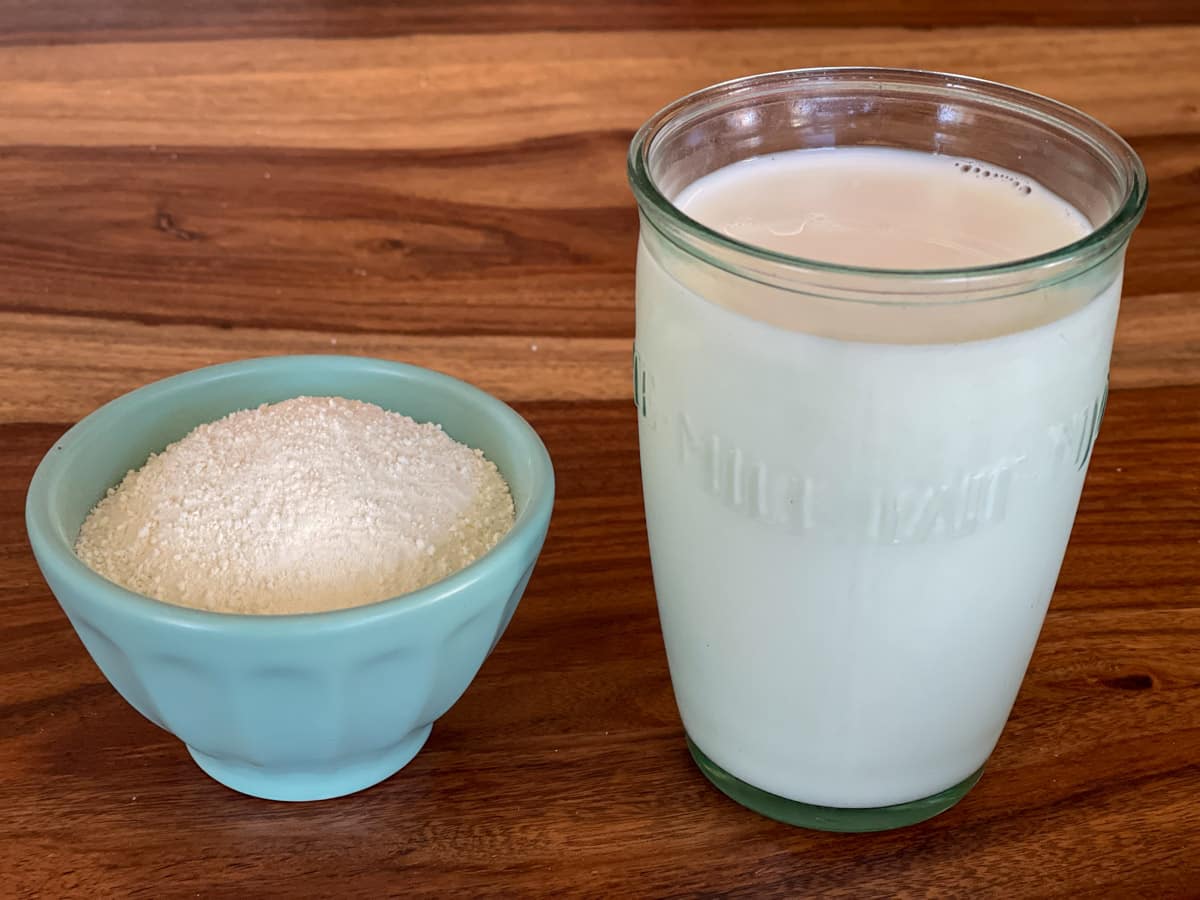
Most powdered milk can be overly processed and often they remove some of the lactose which the microbes need to consume to make kefir. When made from a quality, minimally processed brand that has at least 12 grams of lactose or carbohydrates, you can be successful in making kefir. However, you may not like the resulting flat taste and texture. Kefir does best with fresh milk.
Non-Dairy Kefir
 Non-Dairy Kefir
Non-Dairy Kefir
I have seen many people benefit from kefir, and this includes non-dairy kefir. So many people need a dairy-free version, so we created just about every kind of non-dairy kefir we could think of. The only one we tried and didn't like was hemp milk. It came out with a really strong taste that was off-putting, so we didn't include it. We have recipes for almond, walnut, coconut, pistachio, rice, oat, flax, peanut, pinenut, hazelnut, pumpkin seed, macadamia nut, pecan, and sunflower seed. Check out some of the qualities of non-dairy kefir and click the link to see the recipes.
Non-dairy kefir is usually thinner than regular kefir
Non-dairy kefir is usually thinner than regular kefir, so it separates into whey and curds since most non-dairy kinds of milk have a lot of water in them. Don't worry, this is ok and doesn't mean it's over fermenting. This is just from the water content separating from whatever grains, seeds, or nuts you're using. It's still loaded with tons of probiotics and nutrients. When it separates, just shake it up before you use it.
Low in carbohydrates
Most non-dairy milks are low in carbohydrates and don't contain lactose, the main food source for the minions in (dairy) kefir. The microbes need some type of sugar to consume in order to generate lots of probiotics, so included in each non-dairy recipe is a small amount of sugar since there's no lactose. No worries, you won't get this sugar because the millions of microbes will consume the sugar and then make you billions of probiotics. Cool, right?
Here is a list of the non-dairy milk kefirs you can make. We have a lot to choose from, so pick the ones that most interest you. Remember, nuts and seeds are prebiotics for your bacteria, so it makes it grow like crazy, which is a very good thing.
Check out the recipes on how to make Kefir
Listen To My Podcast
There are many ways to make kefir with many different types of milk, and believe me, I've tried them all. Mostly to try to help you. I have some of my favorites, but I will explain which ones you can use and let you know my favorites. There is a lot to understand about milk and the many ways you can consume it and use it to make kefir. Things like, "What do pasteurization and homogenization do to milk? Why don't you recommend organic milk to make kefir? Can I culture cream and make kefir butter and sour cream? What about non-dairy milk to make kefir? Does raw milk make good kefir?" I go into great detail here but stay with me, you'll learn so much.
References:
- https://pubmed.ncbi.nlm.nih.gov/17887934/
Are you on the list?
Sign up today and I'll send you my free Getting Started Guide!
Each week I'll send you updates, tips, recipes, and more! You might even be a winner of my weekly giveaway! (starter cultures, memberships, and more!)
Come be a part of my cultured food family!

